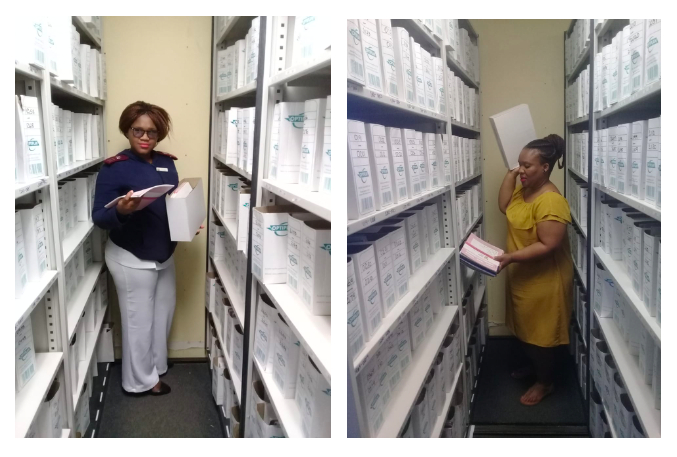Before February 2019, at Holy Cross Gateway Clinic, everyone was waiting. Nurses were waiting for more than two hours for patients to come to their consulting rooms, while at reception, patients were also waiting – on average five to six hours. But a deceptively simple filing solution, and a lot of hard work, cleared the bottleneck, restoring an efficient workflow to the clinic.
Holy Cross Gateway Clinic, a clinic in South Africa’s Eastern Cape, identified a blockage in their patient flow at their clinic reception. There it could take up to 20 minutes to find a single patient’s file. In addition, 85% of their patients were seen without a facility-held clinical record because of an inadequate filing system, made worse by broken filing cabinets. Files were stored according to ART start month and year and Health Patient Registration System (HPRS) records were not used.
During the ‘February Frenzy’ campaign driven by the Centers for Disease Control and Prevention (CDC), TB HIV Care supported the facility to make the following changes:
- Old clinical records were converted to new HPRS records – patients were registered on the HPRS system with each patient having an HPRN.
- A local service provider was hired to repair the broken filling cabinets.
- Three additional data capturers were hired to fast-track the process of HPRS registrations and filing into the cabinets according to HPRN.
- Box filers were used to arrange files in the cabinets using the HPRN.
- Professional nurses started using patient appointment books in each consulting room to record patient appointments. When generating an appointment list there are 3 additional columns to control the flow of files in the facility – (file retrieved, file captured and file filed back). These are ticked off at each step.
- Allocation of data capturers – one data capturer is allocated as a supervisor on a monthly rotational basis, to oversee all administration department duties. A second data capturer is allocated to capture National Health Laboratory Services results and complete HIV testing services registers. The second data capturer also assists at the registration desk, issuing files to patients who have honoured their appointment dates and those who present themselves without an appointment (retrieving files from the filing room).
The new filing system means that files take less than a minute to retrieve. The average patient waiting time at the clinic reduced from five to six hours to between 40 and 50 minutes. The appointment system has meant patient files can be retrieved the day before their consultation, meaning their file is ready and available when they arrive for their appointment. Nurses can now see patients from early morning with no delays, while the patients’ experience of the clinic has also vastly improved.


